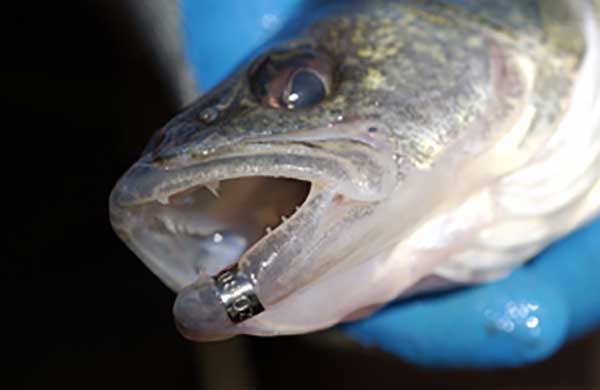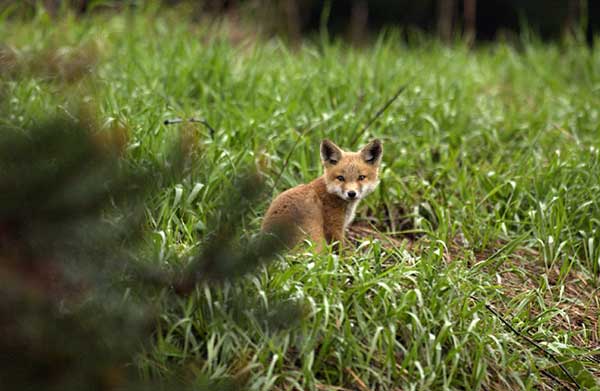- Details
(Provided by USFWS)
U.S. Fish and Wildlife Service personnel will apply lampricides to the Galien River in Berrien County, Michigan and LaPorte County, Indiana to kill sea lamprey larvae burrowed in the stream bottom.
The applications will be conducted between May 31 and June 9, 2016 in accordance with States of Michigan and Indiana permits. Application will be complete in about four days. Application dates are tentative and may be changed based upon local weather or stream conditions near the time of treatment.
Sea lamprey larvae live in certain Great Lakes tributaries and transform to parasitic adults that migrate to the Great Lakes and kill fish. Failure to kill the larvae in streams would result in significant damage to the Great Lakes fishery. Infested tributaries must be treated every three to five years with lampricides to control sea lamprey populations.
- Details
(Provided by Michigan DNR)
Michigan DNR wildlife division officials said the size of the states wolf population has not changed significantly since the last survey was conducted in 2014.
DNR wildlife researchers estimate there was a minimum of 618 wolves in the Upper Peninsula this winter. The 2014 minimum population estimate was 636 wolves.
"The confidence intervals of the 2014 and 2016 estimates overlap, thus we canít say with statistical confidence that the population decreased," said Kevin Swanson, wildlife management specialist with the DNRs Bear and Wolf Program in Marquette.
Confidence intervals are a range of values that describe the uncertainty surrounding an estimate.
Swanson said, based on the 2016 minimum population estimate, it is clear that wolf numbers in Michigan are viable, stable and have experienced no significant change since 2014.
- Details
(Provided by Michigan DNR)
 Report Tagged Saginaw Walleyes!
Report Tagged Saginaw Walleyes!
The Michigan DNR recently jaw tagged 3,000 walleyes in a number of Saginaw Bay tributary rivers. Anglers are asked to collect information on tagged fish they catch and to report it to the DNR.
The DNR has tagged more than 100,000 walleyes in the Saginaw Bay area since 1981. Jaw tagging is part of a long-term research project to monitor survival and harvest rates and to learn about walleye movement. The program depends on anglers to report when and where they catch a tagged walleye, as well as the fishís length, weight (if known) and tag identification number. Once reported, anglers will receive a letter back detailing the history of their fish.
- Details
(Provided by Michigan DNR)
 Why you should leave wildlife alone in the wild.
Why you should leave wildlife alone in the wild.
Each spring and summer, the Michigan DNR is flooded with calls as people across the state run into a common dilemma they have come across a baby animal and desperately want to help.
Hannah Schauer, a DNR wildlife education technician, spends time talking with the public about why it is better to leave baby animals in the wild.
"The vast majority of the time these wild animals do not need our help," Schauer said. "Wildlife can survive on a day-to-day basis without help from humans."
- Details
(Provided by Michigan DNR)
 Michigan busy stocking lakes throughout the state./>The Michigan DNR is in the middle of its new fish stocking season, and this spring people will see DNR fish stocking trucks releasing their prized recreational cargo at hundreds of lakes and streams throughout the state.
Michigan busy stocking lakes throughout the state./>The Michigan DNR is in the middle of its new fish stocking season, and this spring people will see DNR fish stocking trucks releasing their prized recreational cargo at hundreds of lakes and streams throughout the state.
Visit the DNR's fish stocking website at michigandnr.com/fishstock/ for information on local fish stocking locations.
Fish stocking is a valuable tool used by fisheries managers to restore, enhance and create new fishing opportunities in Michigan's inland lakes, streams and the Great Lakes. The DNRs Fisheries Division accomplishes this task by rearing fish at its six fish production facilities located throughout the state, cooperatively managing up to 50 rearing ponds and 13 imprinting net pen locations, and maintaining a fleet of 18 specialized fish stocking vehicles.


